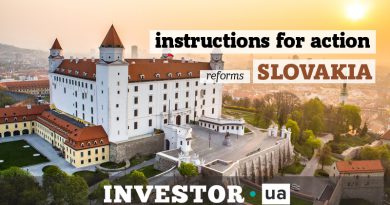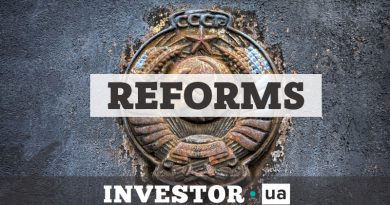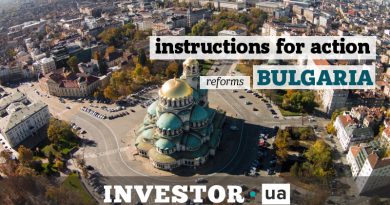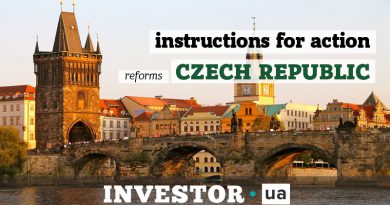Instructions for action: Estonia’s reforms (Part 3)
In Estonia, inflation was over 1000% in 1992, and production fell by as much as 45%. Due to lack of fuel a plan for evacuation of urban residents to the countryside was developed. However, in 1995, inflation dropped to 29%, and in 2006, the country’s economic growth was 12%. The standard of living exceeded the average in Europe, reports “Investor”.
In the early’s Estonia was completely dependent on energy from Russia. 92.5% of the country’s export was to Russia. Trade with Western Europe was minimal. Fall of living standards was dramatic: food was issued on cards, and milk was only for mothers with three children.
Thus, the reformers had to act decisively, adopting changes and complying with them, even in spite of temporary hardships.
“Mistakes in the reform process are inevitable, but still the most important thing is to act quickly, because delaying means losing”,
– said Mart Laar, former Prime Minister of Estonia.
The first and one of the most important reforms was monetary one. Its essence was the introduction of the national currency – the kroon and its attachment to the German mark. Soviet rubles could be exchanged at the rate of ten rubles per kroon. Anyone whose identity has been established could exchange cash up to one and a half thousand rubles at such a rate starting June 20, 1992, in the course of three days.

Cash in the amount of more than one and a half thousand could be exchanged in banks at a rate of fifty rubles per kroon. The funds on the bank accounts could also be exchanged, except for those that were placed after May 1, 1992. This made it possible to avoid the influx of cheap Russian rubles and to introduce a clear financial policy.
In the context of monetary reform, the creation of the Currency Council was established. It supported the fixed exchange rate and the balance of the state budget. Also, it forbade the Bank of Estonia to lend to the state.
Monetary reform was followed by more than 300 legislative. They were adopted quickly and were as simple as possible.

Estonia has abandoned IMF loans, and for the balancing of the budget abolished subsidization of state-owned enterprises. Thus, the message was formed for enterprises – to change or to go bankrupt. As a result, about 30% of enterprises went bankrupt, but this cleared the way for more viable business.
Another important point was that an efficient government is a small government. Therefore, ministries were reorganized and their number reduced by 30%. The local administrative level was abolished, small communities were united into larger and local authorities were transformed into one-level institutions.
Under the Soviet imposed socialism, people were not afraid to take the initiative or take risks. It was necessary to encourage people to act, make decisions and take responsibility for themselves. To achieve this Estonia had to find a way to give people equal opportunities for doing business. The economy was opened to the world market. This decision stimulated competition and allowed attracting foreign investment.

Accordingly, Estonia has lowered trade tariffs and non-tariff barriers and abolished all export restrictions by making the country a free trade area. Safeguarding tariffs, in the first place, promotes politically organized sectors, and not those most in need. Openness has brought to Estonia many new companies that have opened new, export-oriented factories.
The land sales law became very important. It guaranteed more sense of security and protected property rights for all foreign investors. All investors were given equal rights and conditions that contributed to investing. As a result, Estonia has become Mecca for foreign investors. It received more foreign investment per capita in the second half of the 1990s than any other country in Central and Eastern Europe.
Estonia’s experience shows that the most effective method of combating corruption and organized crime is strong introduction of market-based economic reforms, civil society development and the rule of law. If the rules are transparent and understandable and the state does not have the power to license enterprises or restrict exports and imports, then there will be no opportunity to give bribes.

Estonia eliminated all state-owned banks and set out strict requirements for private ones. Banks had to compete and the state did not hesitate when they went bankrupt. As a result, Estonia has the most effective banks in the Baltic States and is less corrupt than other new EU member states.
At the heart of the economic transition is the transition to private property. In order to achieve a free economy with strong property rights the restoration of property to former owners, the privatization of existing state assets and the revival of private business were implemented. Without private ownership the transition to a market economy will fail.
As a result of privatization, thousands of new small and medium enterprises, restaurants, hotels and shops have been formed. In 1992 there were about 2000 enterprises in Estonia. By the end of 1994, this figure has increased to 70,000. Estonia has become a country of entrepreneurs.
An important element of the reform is the change in taxation. The best solution was to establish a fixed income tax on individuals, and Estonia introduced such a system on January 1, 1994. The tax system has become simpler and easier to understand for taxpayers. Taxpayers can easily fill out tax forms and avoid overly complex calculations and bureaucracy.
Estonia’s reforms were quickly recognized by the European and world community. It is one of the first post-communist countries to become a member of the EU and NATO.

The country has made a real jump in modern technology and is a leader in e-government. At meetings of the government, its members use only computers – there is no paper at all. Estonia is now ahead of many EU countries in using the Internet. Estonians carry out most of their bank transfers online. Tax returns can be sent to the tax department electronically. The registration of the tax form takes about five minutes.
An e-government can be a very effective tool for creating an open government. The use of the Internet government, in turn, has created favorable opportunities for new high-tech enterprises. The most famous Estonian invention is Skype electronic communications system, which was the third most influential brand in the world in 2006.
Therefore, Estonia demonstrates that reforms must be swift and inevitable. Reformers need to be patient and not always take into account dissatisfaction of the population. It is also important to note that the external money lending may always be helpful to the country, and the bankruptcy of large subsidized enterprises will lead to poverty. However, the most important lesson is: the more openness and competition, the less corruption.








